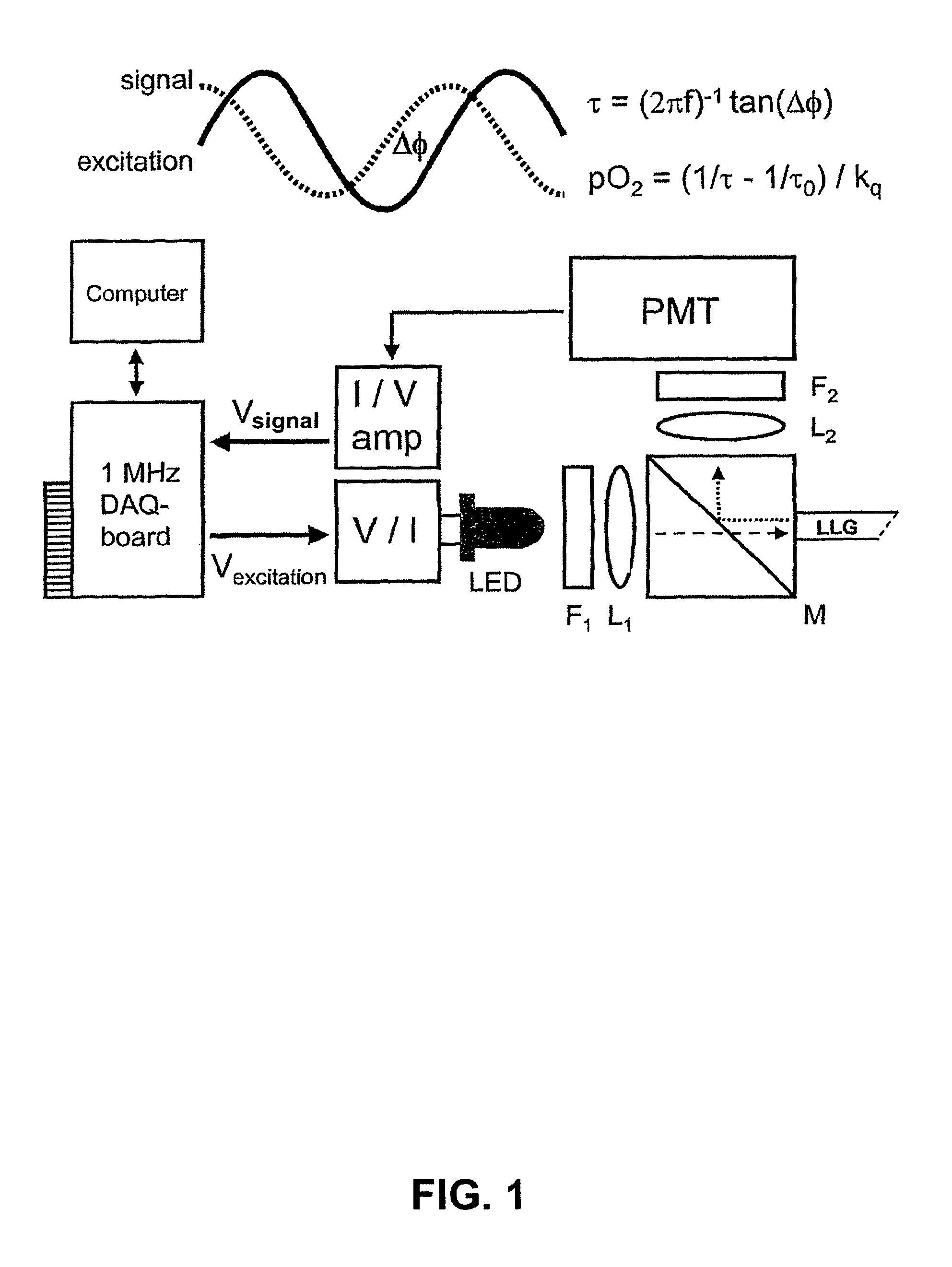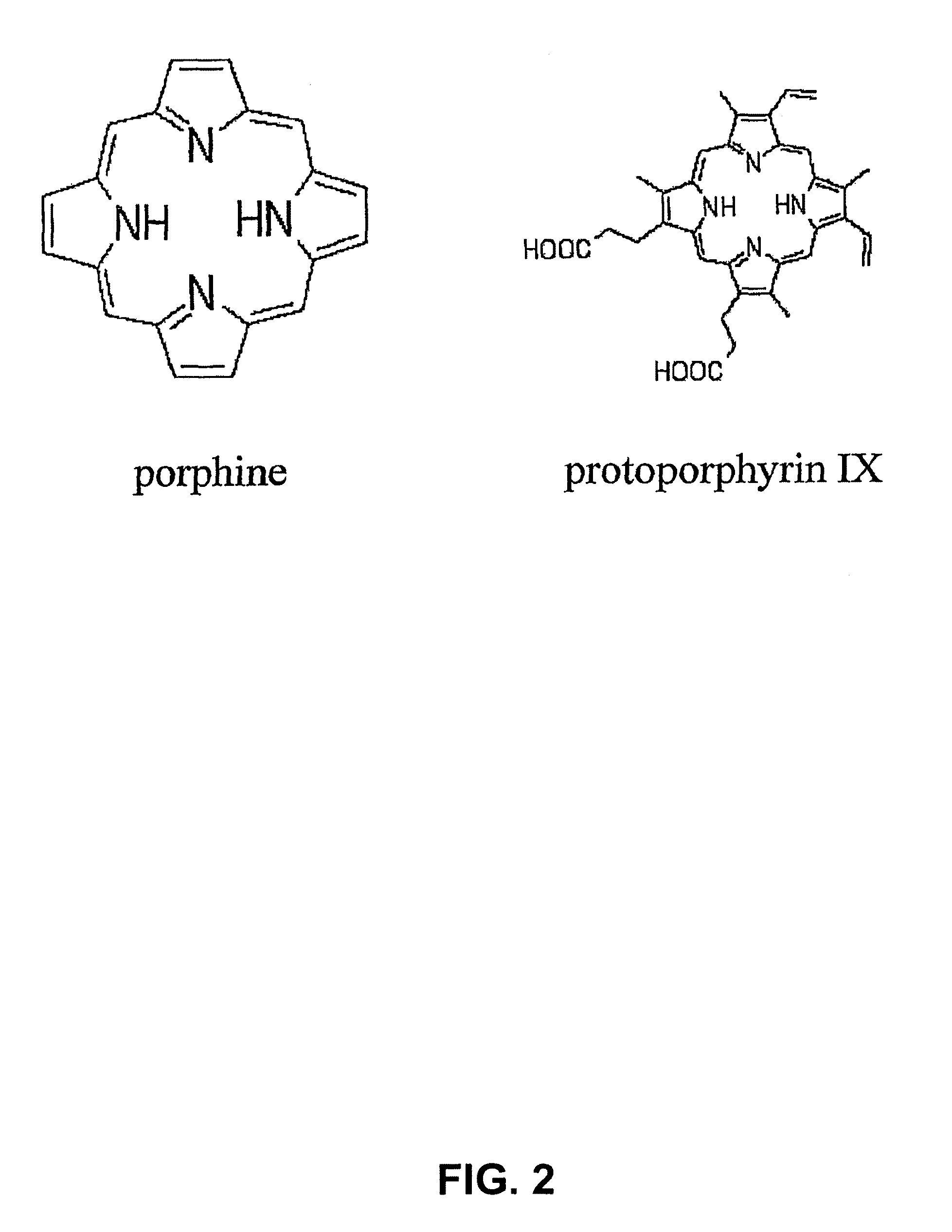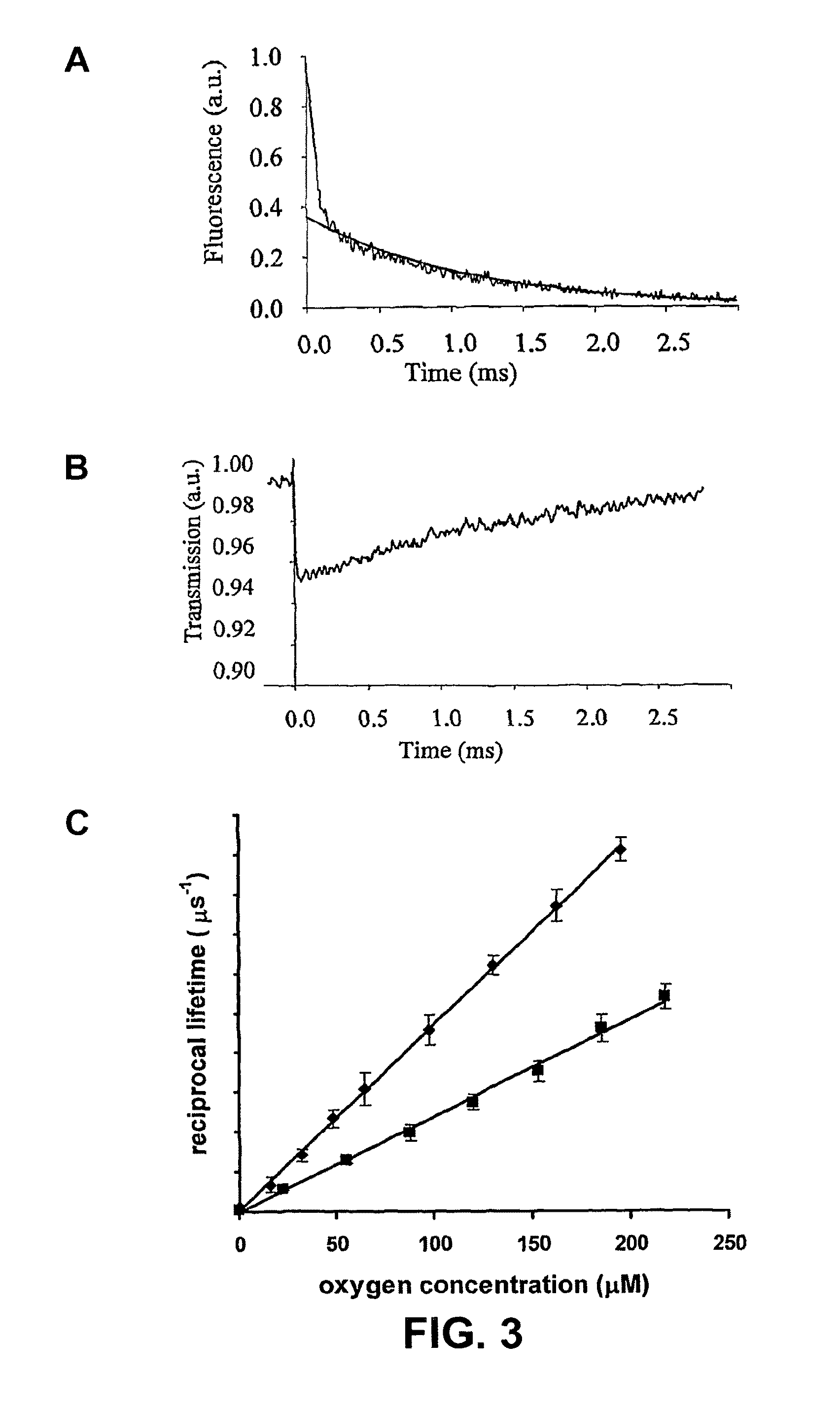Methods for determining oxygen concentration with protoporphyrin IX
a technology of protoporphyrin and oxygen concentration, applied in the field of medicine, can solve the problems of mechanical disturbance, limited pre-clinical application, and unsuitable clinical settings, and achieve the effects of reducing the number of patients, and improving the quality of li
- Summary
- Abstract
- Description
- Claims
- Application Information
AI Technical Summary
Benefits of technology
Problems solved by technology
Method used
Image
Examples
example 1
[0082]The spectra of prompt and delayed luminescence were recorded using a LS50B luminescence spectrometer (Perkin-Elmer, Wellesley, Mass., USA). Prompt fluorescence was measured using the fluorescence mode with excitation source correction. Delayed luminescence was recorded in the phosphorescence mode, using varying delay times with respect to the excitation flash and a gate width of 100 μs. The measurements were made at room temperature. Excitation and emission wavelengths and slit widths will be specified in the results section. Spectra were recorded with either air-saturated samples or samples containing zero oxygen. Adding a sufficient amount of ascorbic acid (20 μl of 200 mM solution) to the already ascorbate oxidase-containing samples (1 unit ascorbate oxidase per ml, 3 ml total sample volume) created the zero-oxygen conditions. This method of reducing oxygen levels is explained in more detail below. The amounts of ascorbate oxidase and ascorbic acid used did not interfere wi...
example 2
[0096]In this example, we demonstrate the feasibility of the proposed method for measuring intramitochondrial oxygen levels in living cells.
[0097]Equipment
[0098]In this Example, a method of the invention is, for instance, performed in the time domain using pulsed excitation from an experimental high-power tunable laser. The laser of this Example consists of a doubled flash-lamp pumped Nd-YAG laser pumping an optical parametric oscillator (OPO). This results in a tunable laser providing 10 mJ pulses of 6 ns duration. The laser is coupled to a quart cuvette containing the studied samples using a glass fiber. Perpendicular to the laser beam is a detector consisting of coupling lens, monochromator and photomultiplier tube (PMT). The photomultiplier (Hamamatsu R928) is working in photon-counting mode and is gated during laser excitation by reversing the polarities of the second and third dynode. The current from the PMT is voltage converted using a fast-switching integrator (integration ...
example 3
[0103]An example of an experimental two-photon set-up is given in FIG. 13. In this example, excitation is achieved using a Q-switched laser operating at 1064 nm (Laser 1-2-3, Schartz Electro-Optics Inc., Orlando, Fla., USA). The laser provides pulses of approximately 10 ns duration and an energy ranging from 10 mJ per pulse for in vitro experiments to 100 mJ per pulse in in vivo experiments. The bundle diameter of the laser beam is slightly expanded to a final diameter of 5 mm by a beam expander, before being directed to the focusing lens by an optical mirror with an enhanced silver reflection surface (Opto Sigma, Santa Anna, Calif., USA). The focusing lens is a single plan-convex lens with a focal length of 2.0 cm. Based on Gaussian beam optics, the bundle diameter of 5 mm combined with a lens with a focal length of 2.0 cm results in a focal spot size of 8 μM and a focus length of 94 μm (in air). Assuming a refractive index in tissue of 1.4, the measurement volume is approximately ...
PUM
| Property | Measurement | Unit |
|---|---|---|
| frequency | aaaaa | aaaaa |
| transmission wavelength | aaaaa | aaaaa |
| slit width | aaaaa | aaaaa |
Abstract
Description
Claims
Application Information
 Login to View More
Login to View More - R&D
- Intellectual Property
- Life Sciences
- Materials
- Tech Scout
- Unparalleled Data Quality
- Higher Quality Content
- 60% Fewer Hallucinations
Browse by: Latest US Patents, China's latest patents, Technical Efficacy Thesaurus, Application Domain, Technology Topic, Popular Technical Reports.
© 2025 PatSnap. All rights reserved.Legal|Privacy policy|Modern Slavery Act Transparency Statement|Sitemap|About US| Contact US: help@patsnap.com



